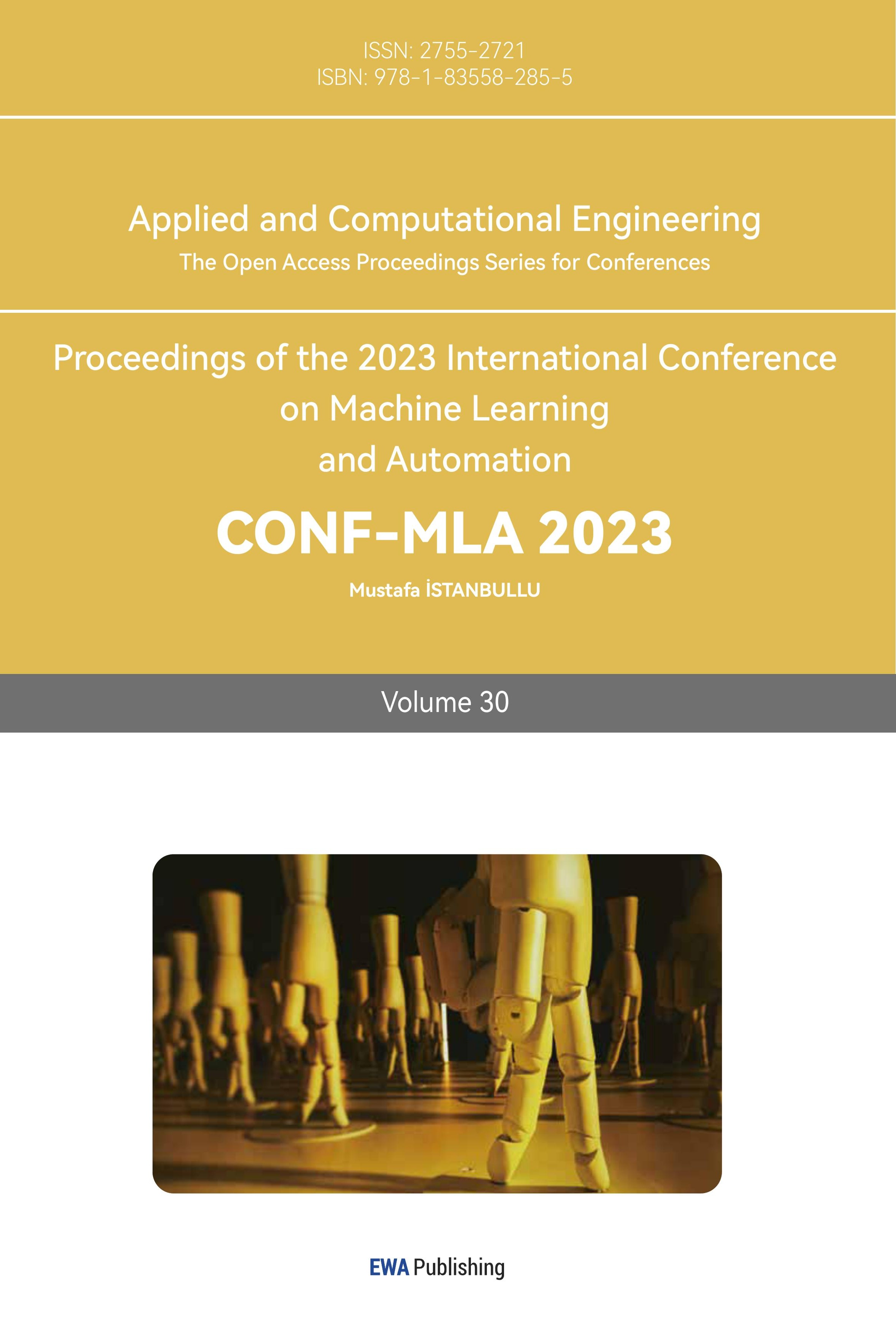References
[1]. A. Hakami, A. Kumar, S. J. Shim, and Y. A. Nahleh. Application of soft systems methodology in solving disaster emergency logistics problems. International Journal of Industrial and Manufacturing Engineering, 7(12):2470–2477, 2013.
[2]. W. Wang and F. Tai. Research progress on bat audition and echo localization in china. Journal of Shaanxi Normal University: Natural Science Edition, 34(B03):121–127, 2006.
[3]. N. Li. Theoretical modeling and experimental study on noise of laser radar receiver. 2016.
[4]. W. Wei. Research on Positioning and Navigation System for Substation Inspection Robot based on Differential GPS. PhD thesis, Harbin: Harbin Institute of Technology, 2015.
[5]. T. Shen, W. Liu, and J. Wang. Object ranging system based on binocular stereovision. Electronic Measurement Technology, (4):52–54, 2015.
[6]. T. Thueer and R. Siegwart. Mobility evaluation of wheeled all-terrain robots. Robotics and Autonomous Systems, 58(5):508–519, 2010.
[7]. H. Wang, C. Wang, and L. Xie. Lightweight 3-d localization and mapping for solid-state lidar. IEEE Robotics and Automation Letters, 6(2):1801–1807, 2021.
[8]. Intel. Intel® realsense lidar camera l515 datasheet. https : / / www . intelrealsense . com / download / 7691/, 2021.
[9]. Velodyne. Hdl-32e high resolution real-time 3d lidar sensor. https://velodynelidar.com/products/hdl-32e/.
[10]. J. S. Dai. Euler–rodrigues formula variations, quaternion conjugation and intrinsic connections. Mechanism and Machine Theory, 92:144–152, 2015.
[11]. J. Wang, J. Boyer, and M. G. Genton. A skewsymmetric representation of multivariate distributions. Statistica Sinica, pages 1259–1270, 2004.
[12]. K. Zhou, Q. Hou, R. Wang, and B. Guo. Real-time kdtree construction on graphics hardware. ACM Transactions on Graphics (TOG), 27(5):1–11, 2008.
[13]. C. Hertzberg, R. Wagner, U. Frese, and L. Schröder. Integrating generic sensor fusion algorithms with sound state representations through encapsulation of manifolds. Information Fusion, 14(1):57–77, 2013.
[14]. M. Yermo, F. F. Rivera, J. C. Cabaleiro, D. L. Vilariño, and T. F. Pena. A fast and optimal pathfinder using airborne lidar data. ISPRS Journal of Photogrammetry and Remote Sensing, 183:482–495, 2022.
[15]. J. Zhao, Q. Xu, S. Zlatanova, L. Liu, C. Ye, and T. Feng. Weighted octree-based 3d indoor pathfinding for multiple locomotion types. International Journal of Applied Earth Observation and Geoinformation, 112:102900, 2022.
Cite this article
Ding,Y.;Ye,F. (2024). A search and rescue robot design based on LiDAR technology. Applied and Computational Engineering,30,238-254.
Data availability
The datasets used and/or analyzed during the current study will be available from the authors upon reasonable request.
Disclaimer/Publisher's Note
The statements, opinions and data contained in all publications are solely those of the individual author(s) and contributor(s) and not of EWA Publishing and/or the editor(s). EWA Publishing and/or the editor(s) disclaim responsibility for any injury to people or property resulting from any ideas, methods, instructions or products referred to in the content.
About volume
Volume title: Proceedings of the 2023 International Conference on Machine Learning and Automation
© 2024 by the author(s). Licensee EWA Publishing, Oxford, UK. This article is an open access article distributed under the terms and
conditions of the Creative Commons Attribution (CC BY) license. Authors who
publish this series agree to the following terms:
1. Authors retain copyright and grant the series right of first publication with the work simultaneously licensed under a Creative Commons
Attribution License that allows others to share the work with an acknowledgment of the work's authorship and initial publication in this
series.
2. Authors are able to enter into separate, additional contractual arrangements for the non-exclusive distribution of the series's published
version of the work (e.g., post it to an institutional repository or publish it in a book), with an acknowledgment of its initial
publication in this series.
3. Authors are permitted and encouraged to post their work online (e.g., in institutional repositories or on their website) prior to and
during the submission process, as it can lead to productive exchanges, as well as earlier and greater citation of published work (See
Open access policy for details).
References
[1]. A. Hakami, A. Kumar, S. J. Shim, and Y. A. Nahleh. Application of soft systems methodology in solving disaster emergency logistics problems. International Journal of Industrial and Manufacturing Engineering, 7(12):2470–2477, 2013.
[2]. W. Wang and F. Tai. Research progress on bat audition and echo localization in china. Journal of Shaanxi Normal University: Natural Science Edition, 34(B03):121–127, 2006.
[3]. N. Li. Theoretical modeling and experimental study on noise of laser radar receiver. 2016.
[4]. W. Wei. Research on Positioning and Navigation System for Substation Inspection Robot based on Differential GPS. PhD thesis, Harbin: Harbin Institute of Technology, 2015.
[5]. T. Shen, W. Liu, and J. Wang. Object ranging system based on binocular stereovision. Electronic Measurement Technology, (4):52–54, 2015.
[6]. T. Thueer and R. Siegwart. Mobility evaluation of wheeled all-terrain robots. Robotics and Autonomous Systems, 58(5):508–519, 2010.
[7]. H. Wang, C. Wang, and L. Xie. Lightweight 3-d localization and mapping for solid-state lidar. IEEE Robotics and Automation Letters, 6(2):1801–1807, 2021.
[8]. Intel. Intel® realsense lidar camera l515 datasheet. https : / / www . intelrealsense . com / download / 7691/, 2021.
[9]. Velodyne. Hdl-32e high resolution real-time 3d lidar sensor. https://velodynelidar.com/products/hdl-32e/.
[10]. J. S. Dai. Euler–rodrigues formula variations, quaternion conjugation and intrinsic connections. Mechanism and Machine Theory, 92:144–152, 2015.
[11]. J. Wang, J. Boyer, and M. G. Genton. A skewsymmetric representation of multivariate distributions. Statistica Sinica, pages 1259–1270, 2004.
[12]. K. Zhou, Q. Hou, R. Wang, and B. Guo. Real-time kdtree construction on graphics hardware. ACM Transactions on Graphics (TOG), 27(5):1–11, 2008.
[13]. C. Hertzberg, R. Wagner, U. Frese, and L. Schröder. Integrating generic sensor fusion algorithms with sound state representations through encapsulation of manifolds. Information Fusion, 14(1):57–77, 2013.
[14]. M. Yermo, F. F. Rivera, J. C. Cabaleiro, D. L. Vilariño, and T. F. Pena. A fast and optimal pathfinder using airborne lidar data. ISPRS Journal of Photogrammetry and Remote Sensing, 183:482–495, 2022.
[15]. J. Zhao, Q. Xu, S. Zlatanova, L. Liu, C. Ye, and T. Feng. Weighted octree-based 3d indoor pathfinding for multiple locomotion types. International Journal of Applied Earth Observation and Geoinformation, 112:102900, 2022.









